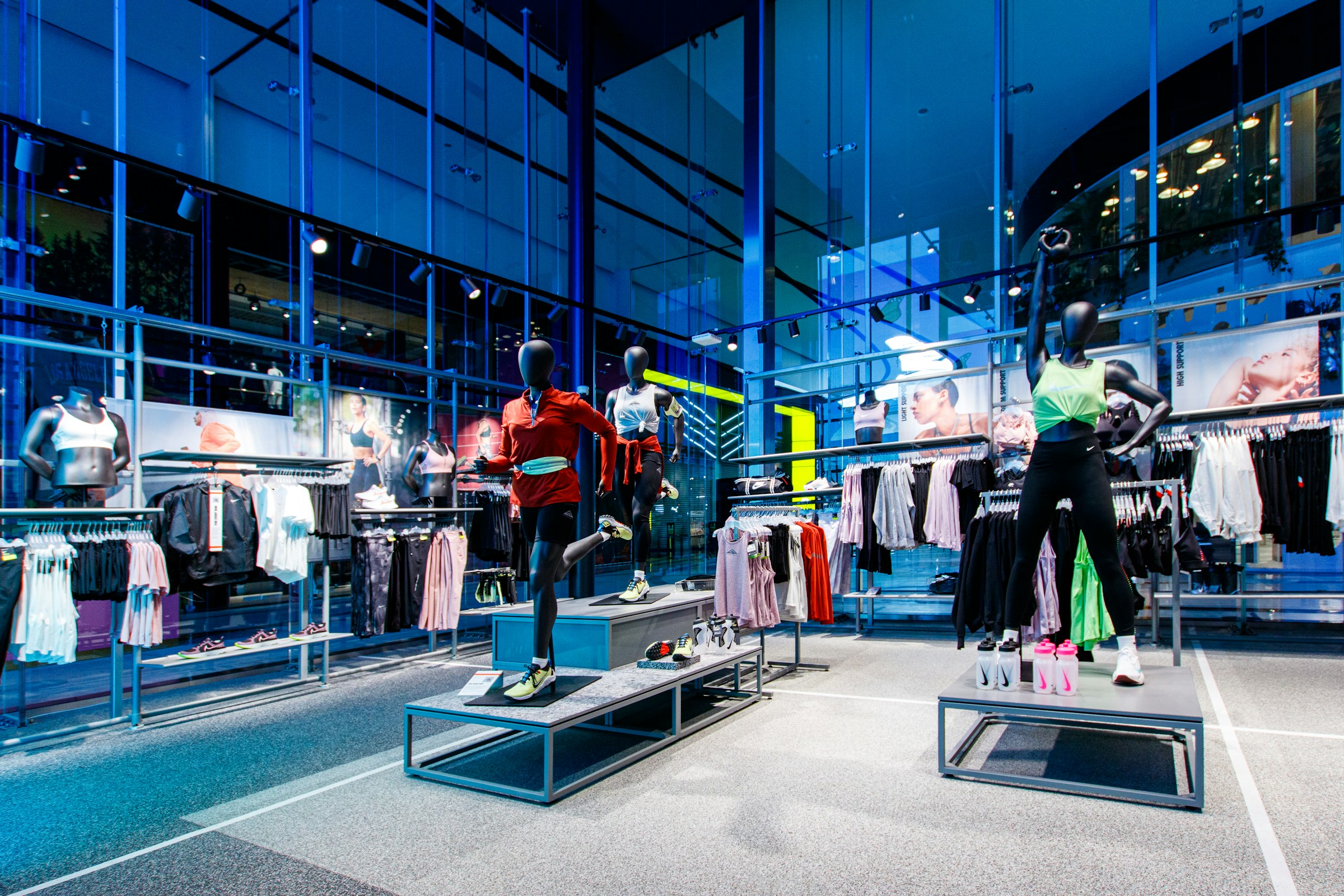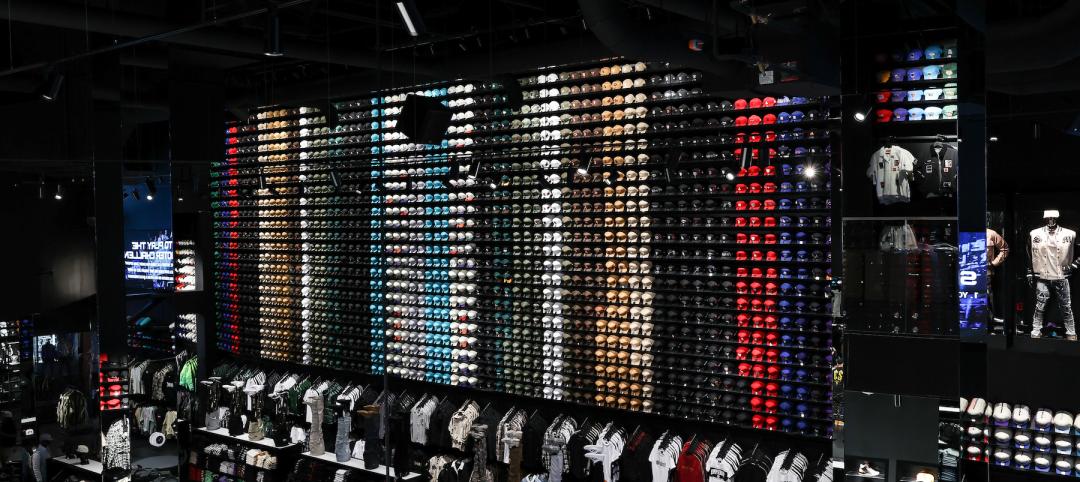Consumers are making lifestyle choices with wellness in mind, which ignites in them a feeling of purpose and a sense of motivation.
That’s the conclusion that the architecture and design firm MG2 draws from a survey of 1,182 U.S. adult consumers the firm conducted last December about their seeking healthier shopping experiences. (Download the full report.)
Nearly half of the respondents said they were aware of the effects that displays which communicate “wellness” have on their minds and bodies. About three in five respondents agreed that sounds generated by physical events—like waves or rain—coupled with natural light can establish a sense of calm. And about the same ratio preferred shopping environments with activity spaces, such as meditation or exercise rooms.
MG2’s report delineates the survey’s respondents by age, location (i.e., suburban, urban, or rural), gender, and household income. The report also groups the respondents into three categories:
- Pathfinders, who like to find, learn about, or develop wellness practices that will fit their lifestyles. Pathfinders accounted for 42% of respondents;
- Escapists, who look for relaxing or centering wellness outlets. This group represented 35% of respondents; and
- Ritualistics, who are committed to wellness routines that address their mental well-being on a scheduled basis.
For many, wellness in retail design equates to calm
The survey elicited responses that accentuated the range of meaning that “wellness” now encompasses. For example, 54% identified physical exercise, like running or yoga, as a wellness practice that enhances mindfulness. When it comes to enhancing emotional wellness, 48% of the survey’s respondents cited personal spaces for meditation or relaxation.
Indeed, “healing,” “tranquility,” and “re-energizing” were the top three themes cited for brands to emphasize in a consumer-focused wellness experience.
When taking a wellness-driven journey, Pathfinders prefer predetermined routes, as do consumers within the 27-43 and 43-49 age groups, whereas Escapists want to determine their own paths. (Ritualistics split down the middle.) All but the Baby Boomer cohort prefer visual messaging cues that help them navigate a wellness journey.

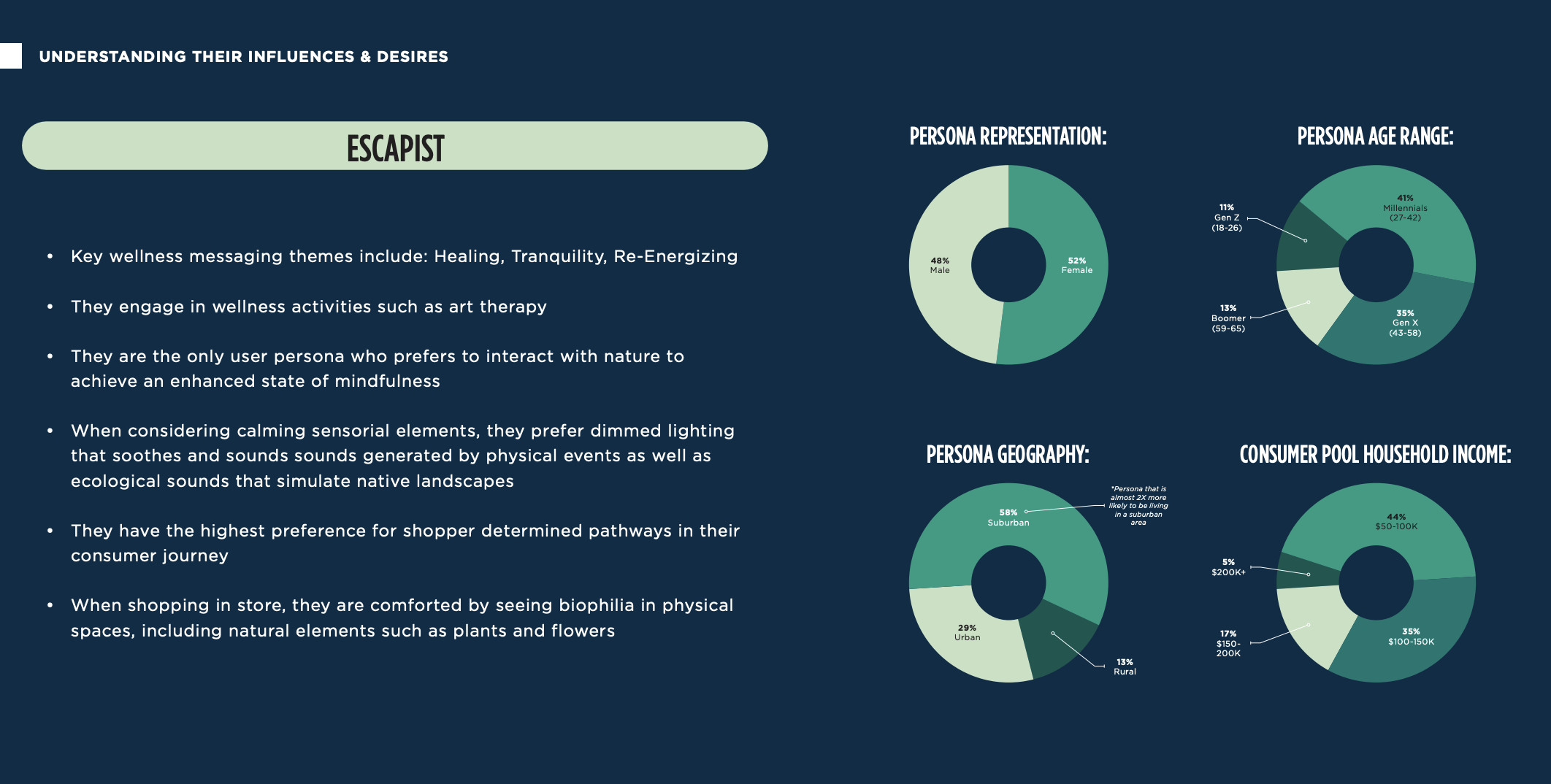

Knowledge about a product or service’s wellness characteristics and its effects on a consumer’s body and mind was deemed important information sought by the greatest percentage of respondents. It’s worth noting, too, that more than one-third of Generation Z consumers wants to know how a product will factor into their daily routines. “Brands and retailers have the ability to establish greater trust with their consumer audience by communicating these details, providing a deeper sense of confidence when deciding to invest in a product or service in support of their wellness journey,” the report states.
Sound, smell, and sight were identified by respondents as the three top integrated in-store senses for memorable experiences. And among the myriad “sensory scapes” that a shopping environment can present, sounds generated by physical events combined with natural light were the mostly likely to add a sense of calm for consumers, followed by ecological scenes and sounds that simulate native landscapes.
Synchronized music and lighting, on the other hand, ranked highest among the sensory scapes that would best add a sense of stimulation within consumers.
Lighting and tech can boost a retail store’s wellness ambience
“You can’t put a price tag on what delivers health and happiness,” says the report, which found that 85% of respondents differentiate wellness-driven retail experiences from conventional shopping.
For Ritualistics, what separates one from the other is how the experience enhances their daily lives. Escapists said it’s an experience that supports their emotional needs. And Pathfinders find wellness in shopping experiences that correspond with their everyday routines. (Boomers were the group least-inclined to see any difference between wellness-driven and traditional shopping.)
Lighting can be a significant factor in how consumers relate to a shopping environment. Nearly half of respondents to MG2’s survey said that dimmed lighting which soothes and provides a sense of leisure best contributes to a feeling of wellness, followed by lighting that mimics the patterns of natural light during the day. (Intriguingly, two out of five respondents with household incomes of $200,000 or more find bright light that energizes to be a contributing factor for wellness in stores.)
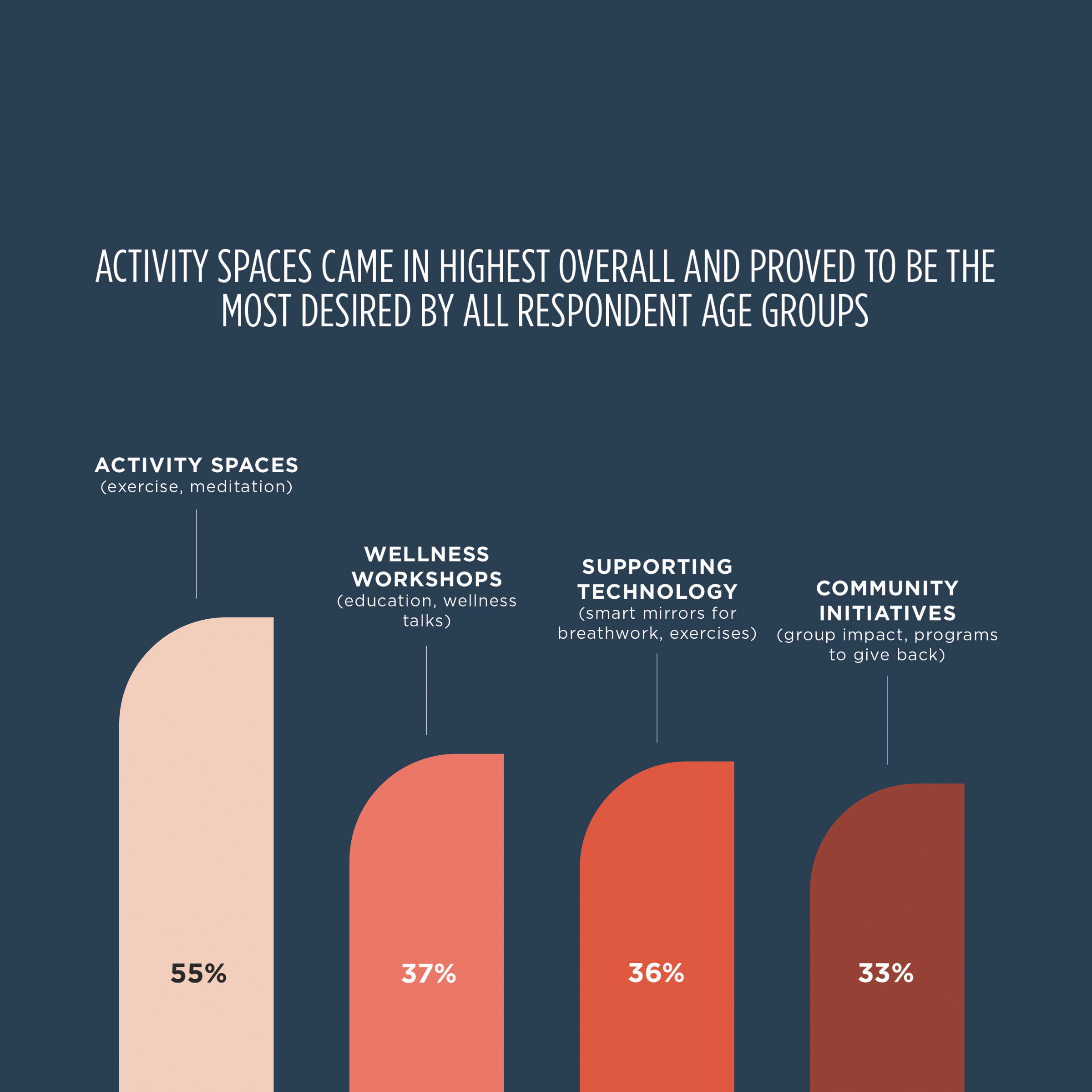
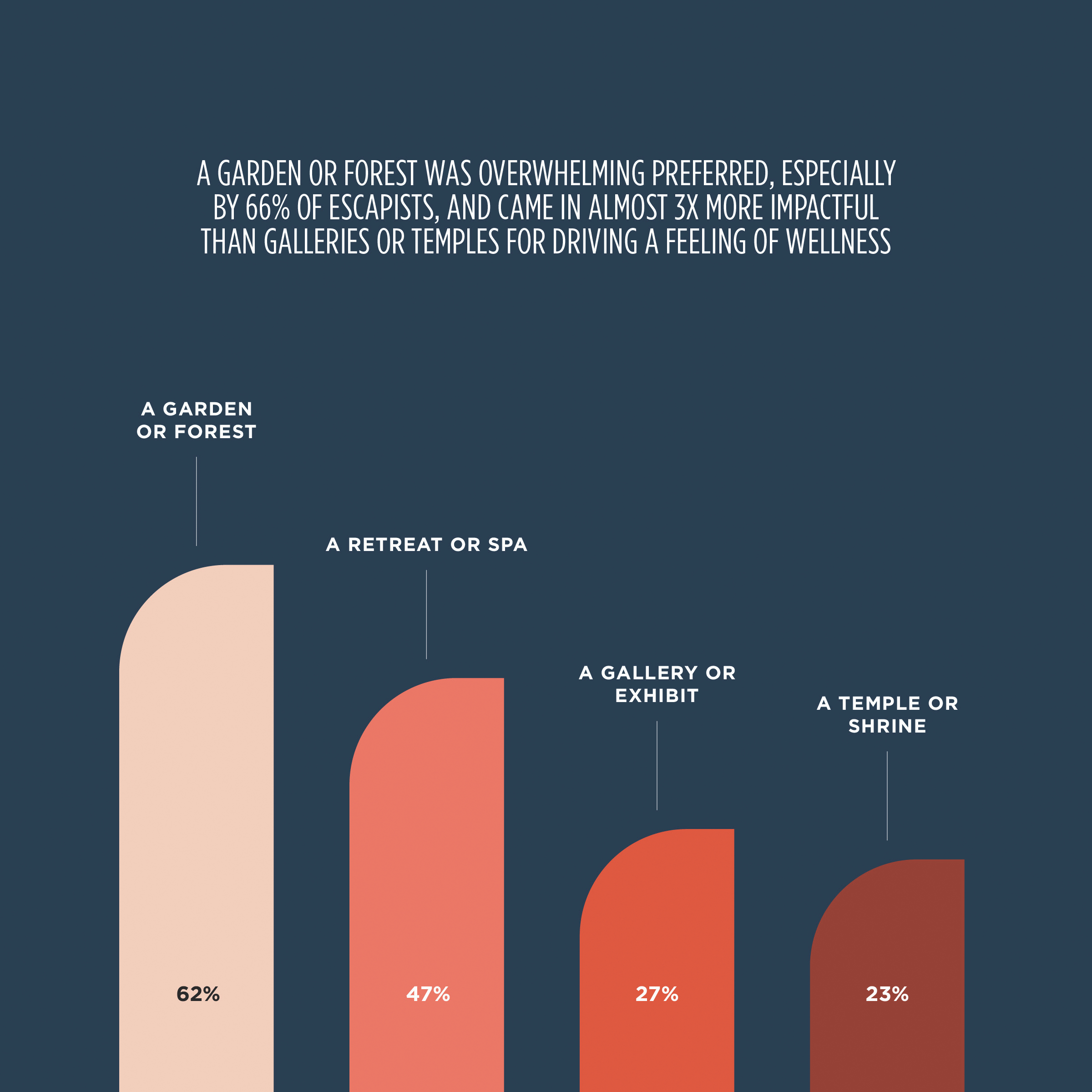
Fifty-five percent of respondents—and 66% of Boomers—cited activity spaces such as those carved out for meditation or exercise as the integrations they most desired in wellness-driven environments. A garden or forest was overwhelmingly preferred among aesthetics within shopping environments that would be most impactful in driving a feeling of wellness in consumers, followed by a retreat or spa.
MG2 posited that technology can be an “innovative and highly experiential” way to drive consumer education and engagement within the wellness space. More than one-third of Gen Z respondents thought that virtual reality can complement a wellness-driven consumer experience, while the highest percentage of Millennials and Gen X respondents (especially those who are female) singled out chromotherapy tech that uses light for physical and mental healing. Forty percent of Boomers saw wellness benefits in interactive wall and window displays that help them explore products and services.
Related Stories
Retail Centers | Nov 29, 2022
'Social' tenants play a vital role in the health of the retail center market
After a long Covid-induced period when the public avoided large gatherings, owners of malls and retail lifestyle centers are increasingly focused on attracting tenants that provide opportunities for socialization. Pent-up demand for experiences involving gatherings of people is fueling renovations and redesigns of large retail developments.
Retail Centers | Nov 17, 2022
Streetwear brand Culture Kings plants its flag in Las Vegas
The immersive retail concept gives customers more reasons to stay in the store longer.
BAS and Security | Oct 19, 2022
The biggest cybersecurity threats in commercial real estate, and how to mitigate them
Coleman Wolf, Senior Security Systems Consultant with global engineering firm ESD, outlines the top-three cybersecurity threats to commercial and institutional building owners and property managers, and offers advice on how to deter and defend against hackers.
Giants 400 | Aug 22, 2022
Top 90 Construction Management Firms for 2022
CBRE, Alfa Tech, Jacobs, and Hill International head the rankings of the nation's largest construction management (as agent) and program/project management firms for nonresidential and multifamily buildings work, as reported in Building Design+Construction's 2022 Giants 400 Report.
Giants 400 | Aug 22, 2022
Top 200 Contractors for 2022
Turner Construction, STO Building Group, Whiting-Turner, and DPR Construction top the ranking of the nation's largest general contractors, CM at risk firms, and design-builders for nonresidential buildings and multifamily buildings work, as reported in Building Design+Construction's 2022 Giants 400 Report.
Giants 400 | Aug 22, 2022
Top 45 Engineering Architecture Firms for 2022
Jacobs, AECOM, WSP, and Burns & McDonnell top the rankings of the nation's largest engineering architecture (EA) firms for nonresidential buildings and multifamily buildings work, as reported in Building Design+Construction's 2022 Giants 400 Report.
Giants 400 | Aug 21, 2022
Top 110 Architecture/Engineering Firms for 2022
Stantec, HDR, HOK, and Skidmore, Owings & Merrill top the rankings of the nation's largest architecture engineering (AE) firms for nonresidential and multifamily buildings work, as reported in Building Design+Construction's 2022 Giants 400 Report.
Giants 400 | Aug 19, 2022
2022 Giants 400 Report: Tracking the nation's largest architecture, engineering, and construction firms
Now 46 years running, Building Design+Construction's 2022 Giants 400 Report rankings the largest architecture, engineering, and construction firms in the U.S. This year a record 519 AEC firms participated in BD+C's Giants 400 report. The final report includes more than 130 rankings across 25 building sectors and specialty categories.
Multifamily Housing | Aug 17, 2022
California strip mall goes multifamily residential
Tiny Tim Plaza started out as a gas station and a dozen or so stores. Now it’s a thriving mixed-use community, minus the gas station.
Sponsored | BD+C University Course | May 3, 2022
For glass openings, how big is too big?
Advances in glazing materials and glass building systems offer a seemingly unlimited horizon for not only glass performance, but also for the size and extent of these light, transparent forms. Both for enclosures and for indoor environments, novel products and assemblies allow for more glass and less opaque structure—often in places that previously limited their use.


